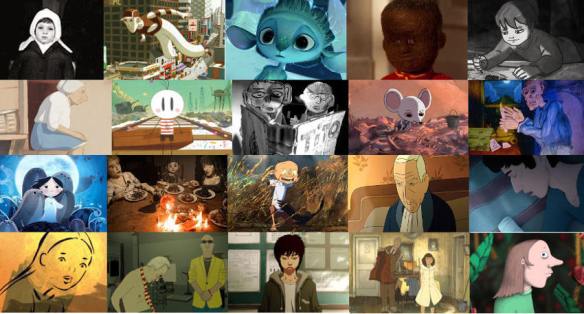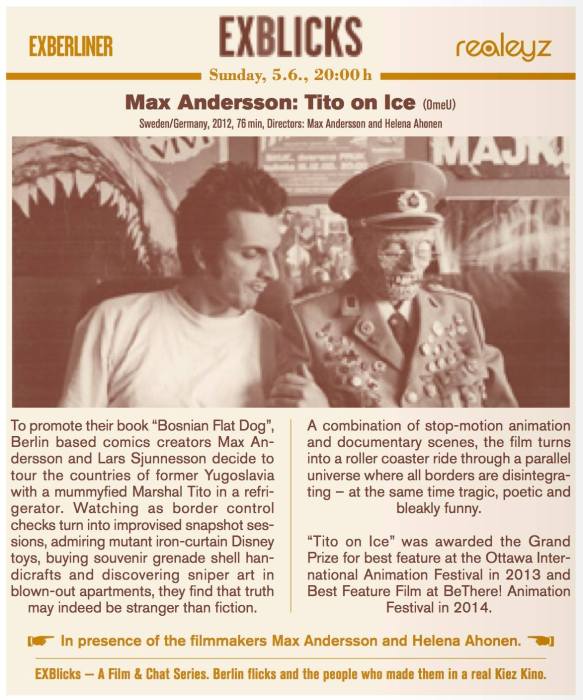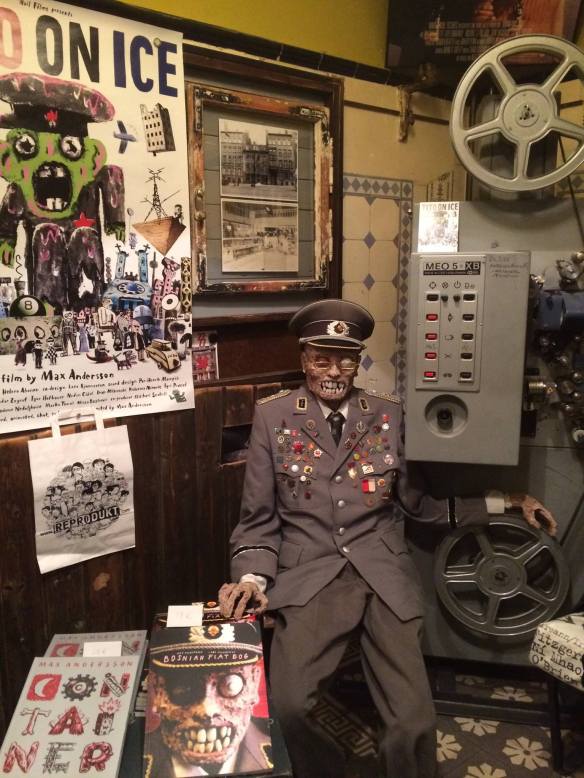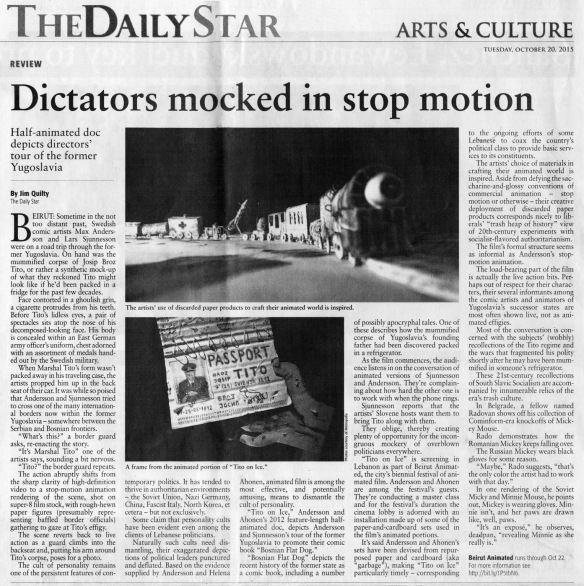
Tito on Ice is on Zippyframes Head Editor Vassilis Kroustallis’ end-of-the-decade list of the 20 best and most influential indie animation features of the 2010s. We’re very proud to be included in this selection of outstanding works!


Tito on Ice is on Zippyframes Head Editor Vassilis Kroustallis’ end-of-the-decade list of the 20 best and most influential indie animation features of the 2010s. We’re very proud to be included in this selection of outstanding works!
TITO ON ICE will wrap up the Berlin edition of the independent art and music festival Easterndaze as the “late show bonus track” part of a double feature presentation with the spanish documentary BEOGRAD UNDERGROUND, which focuses on the extraordinarily rich subcultural scene in Serbia, especially Belgrade and Pančevo, during the late ’90s to early ’00s. By chance, some of the protagonists of the latter movie also make appearances in, or contributed to the soundtrack of TITO ON ICE.
Beograd Underground will be screened on 9 October at 20:00 in Lichtblick-Kino, followed by Tito on Ice (original version with English subtitles) at 22:00. Max Andersson and Helena Ahonen will be present for a Q&A. The event also celebrates the official VoD release of Tito on Ice on Realeyz!
Special screening presented by realeyz and EXBERLINER in Lichtblick-Kino, Berlin at 20:00 on Sunday, June 5 (original version with English subtitles), followed by a Q&A with the directors.


Berliner Premiere: Marschall Tito im Lichtblick-Kino
Ab dem 21. April 2016 läuft TITO ON ICE (OmU) in verschiedenen Berliner Kinos (alle Termine werden beim anklicken angezeigt).
Die Filmemacher Max Andersson und Helena Ahonen werden bei einzelnen Vorführungen anwesend sein:
Berlin: Sa 23.04. 20:30 Uhr Lichtblick-Kino
Berlin: So 24.04. 20:30 Uhr Kino Moviemento
Berlin: Do 28.04. 20:45 Uhr Kino Krokodil
Bundesweit startet er im Rahmen des ComicFilmFestes beim Internationalen Comicsalon Erlangen (26.-29.5).

This gallery contains 15 photos.
Tito on Ice celebrated its Middle East Premiere at the Beirut Animated 4 film festival October 18, 2015, in attendance of directors Helena Ahonen and Max Andersson. The event, which took place at the classic Metropolis cinema in central district … Continue reading
Extensive review of Tito on Ice in Lebanon’s leading English-language newspaper, following the screening at Beirut Animated in October 2015.

We are happy to announce that TITO ON ICE won the prize for BEST FEATURE FILM 2014 at BeThere! Corfu Animation Festival!
This interview appeared in the Thessaloniki Documentary Festival official festival magazine, First Shot #280. Read the complete pdf edition here.
Balkans in the Freezer
Two comic artists travel in the hinterland of the Balkans, stopping at various stations to present their work, bringing with them an effigy of Tito in natural size, literally, growing out of the pages of the comic. One of the greatest living European comic artists, Max Andersson, who was once in the pages of BABEL, documenting his method and experimenting with various expressive means.
Interview: Geli Mademli
What was your prior connection to the Balkans before you wrote Bosnian Flat Dog?
Regarding Yugoslavia, I went there a couple of times in the late 1980’s, because they had one of the most important animation festivals (Animafest, which still exists today in Zagreb) and I was mainly doing animated short films back then. When the civil war started only a few years later, I was shocked since I had never seen violence on this scale developing in a place that I had a personal connection to and that seemed close geographically and culturally.
During the 90’s I got in touch with some comics artists in Slovenia and Serbia, and after the war I was invited to a comics event in Slovenia, which would also include an exhibition in Belgrade. But right at that moment, in May 1999, the NATO bombing campaign against Serbia was carried out, and the borders were closed to Serbia. So instead we ended up driving through Croatia and Bosnia to Sarajevo, where we also had some friends. All the time we could hear the bomb planes, which were launched from bases in Italy, passing over us on their way to hit their targets in Belgrade or Pancevo, where my friend Aleksandar Zograf lives. To us, this was a very unusual and confusing experience. In order to make some sense of it, my colleague Lars Sjunnesson and I made the graphic novel BOSNIAN FLAT DOG.
Actually, during that very same period Helena (Ahonen, the other director of the film) and I also visited Greece twice (in 1997 and 2000). We were invited by BABEL magazine to the comics festival in Athens, where we met people involved in the Greek comics and art scene. I think Zograf was also there once, so there were a lot of connections. But I had been to Greece a lot before that as a tourist, since the late 70’s, usually taking the train through Yugoslavia on my way there…
As an external observer, what difference did you notice throughout this decade?
The documentary parts of TITO ON ICE were shot mainly in 2003 and 2004. When we returned in 2013 to show the finished film, audiences in the countries of former Yugoslavia related to it very well, so I don’t think too much has changed really. The economical situation is, of course, even worse almost everywhere. The process of making the film was very slow, but this is not necessarily a negative thing. Sometimes the added perspective of time makes it easier to see the significance of certain events in the light of later consequences.
When did you decide to “translate” your comic work into another artistic expressive form?
The film is not a translation, or adaption, of BOSNIAN FLAT DOG, but a documentation of events that occurred while we were traveling through the region with the Tito “mummy” after the book was finished. I think the two works complement each other, partly exploring the same themes but providing different perspectives and details to the larger picture, however they also stand alone as separate projects. Using the film medium, and animation, was a natural decision for me since I’ve always done that, parallel to comics. Helena initiated the project by documenting our journeys with a MiniDV camera. That raw material became the basis of the film, which I would then use to create a feature-length narrative, editing and expanding it with the animation sequences.
Could you describe the animating process? Which materials did you use and which method did you apply? And why did you use older media technologies in shooting? What it a mere aesthetic choice?
The animation scenes were shot between 2008 and 2011. By then I had a storyboard and a rough cut of the DV material, with storyboard images inserted where the animation would later be added.
I would start with creating the characters, objects and sets for a particular scene, using all kinds of garbage material – mostly old cardboard stuff, but any kind of trash or broken things that had an interesting look would be included. This film was made essentially without a budget, without funding of any kind, so economy was an important factor. Then I would light and shoot that particular scene and proceed from the beginning with the next one. This was probably less efficient than doing all the set designs at once, and then all the animation, but switching between the two processes made it less boring and repetitive for me.
I improvised a lot while animating the stop-motion stuff, using really unstable and inexact methods for fixating the moving parts (like little pieces of scotch tape), resulting in many accidents during the shooting which I would then incorporate in the film to make it more alive and interesting.
Primarily, using super-8 mm film was a practical choice. I had all this super-8 film stock stored in my freezer at home since 1990, when it was given to me as a kind of award from the Stockholm Film Festival. And I hate throwing things away. I always knew I would use it for something, and this turned out to be the ideal occasion. Plus, I had never really learned to use the computer for animation, so it was easier and faster for me to do it in the old-school analogue way.
Of course it was also an aesthetic choice. For me, the elements which carry emotion in film are basically texture and light. Digital is a simulation of texture, but analogue IS texture, and in my opinion you can’t beat the real thing even though digital software today can get very close.
Would you agree that comic, as an artistic form, has inherently an economy and distinctive pace? If so, has this medium specificity affected the way you film?
Yes, working with comics means that you’re constantly forced to reduce your narrative to the absolute essentials, to a degree that is not necessary in film. This is because you don’t have the dimension of time, the linear flow of action that will almost automatically keep the film viewer interested in watching because things are continuously moving on the screen. With comics, you need to motivate the reader to actively proceed from one panel to the next, in order to create movement in the story. So I think it helps if you’re trained in comics, to be able to cut superfluous information from your film.
In fact film and comics are extremely different mediums, contrary to what is commonly assumed. Comics depend on a unique ability in our brain to instantly create patterns and meanings by combining and comparing separate images. Film instead depends on a limitation in our brain, creating the illusion of movement because we are unable to separate images from each other if they are shown in quick succession with a black space in between.
To what extent have comix been linked primarily to the underground culture? Do you believe that there is still a distinction between “high” and “low” culture in the perception of the art of comix?
Comics was not an underground medium from the beginning, its history is linked to industrialization and the invention of the modern color printing press by the end of the 19th century, so it was originally a mass medium, just like silent movies. And as was the case with film, many of the pioneers of the medium came from a background in vaudeville or circus sideshows – “low” entertainment for the uneducated or illiterate classes. The notion of comics as an underground or subversive medium only appeared with MAD magazine and EC comics in the 50’s, followed by the 60’s underground wave. I think modern “indie” comics had its peak in the 80’s and 90’s, because the mainstream was by then moving to the fields of computer games and video, but printed media still played an important role in subcultural scenes before the internet became the dominating platform for everything.
Today comics (or “graphic novels” as people prefer to say, clearly indicating a higher level on the cultural scale) are finally more or less as accepted as any other medium, creating a “comics literature” market aimed at the middle class, but this also means that the major part of what is produced is too polished, boring and politically correct for my taste. So it’s both good and a little bit sad at the same time.
Where is Tito’s dummy at the moment?
He has retired for the moment, because he needs some solitude and time for himself. He traveled a lot during the last decade – to Slovenia, Croatia, Serbia, Bosnia, Italy, Sweden, Germany, France, Portugal and Czech Republic – and met a lot of people and saw a lot of refrigerators. He wants his current address to be kept a secret.
TITO ON ICE is scheduled for two exceptional events in Austria in March:
Tricky Women International Animation Filmfestival will host the Austrian premiere in Vienna. The screenings in Vienna will be presented by director Helena Ahonen, followed by Q&A sessions with the audience.
On the following Friday, NEXTCOMIC festival in Linz presents a comics exhibition by Max Andersson in the presence of the artist, plus a special screening of TITO ON ICE in conjunction with the opening. On Sunday 23 March, Max will sign his comics BOSNIAN FLAT DOG and CONTAINER from 13.00 – 14.00 at the Ursulinensaal, OÖ Kulturquartier.
…TITO ON ICE!!! We are very happy to announce that Ottawa International Animation Film Festival has awarded our film the Grand Prize for feature film 2013! The motivation by the jury reads “for its daring use of the medium”…. read review of TITO ON ICE by Cinemablographer here (click)!
After years of work this kind of recognition means a lot! This film is produced without external funding, with only a few people involved. That this kind of film can reach an audience anyway proves that you can achieve something good even with small means, and we hope this award will encourage others to work with what they have… this is not saying films don’t need funding and other support, but big budgets sometimes inhibits creativity.
Thank you so much for your support, all of you!!!